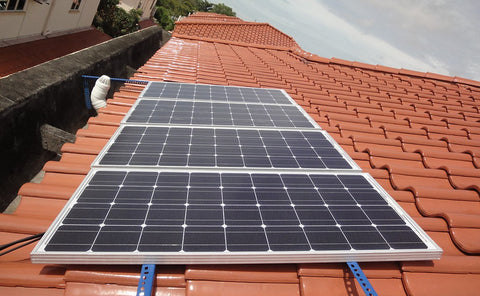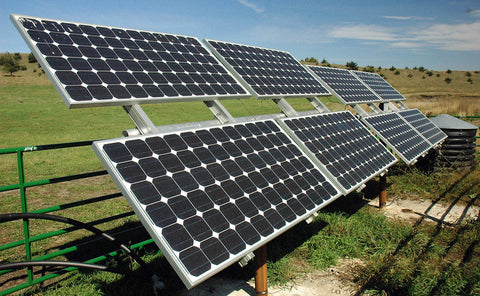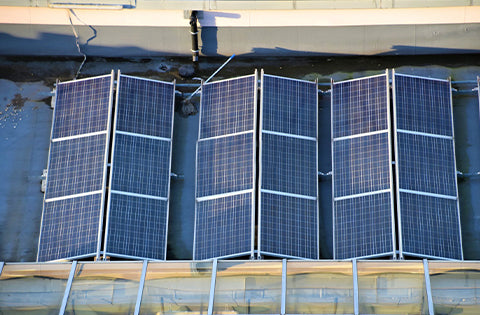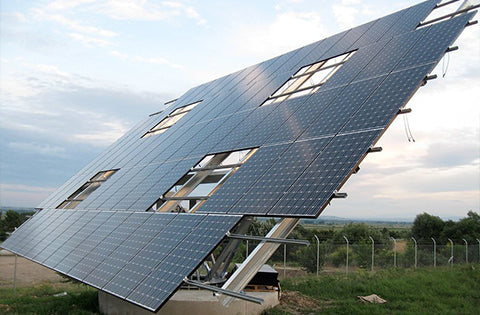It’s no wonder why governments at all levels support the switch to solar and encourage consumers to do so as well. The Department of Energy estimates that from now until 2030, 78% of energy produced by buildings will be from photovoltaic systems. Therefore, we need to correct some misconceptions towards solar power. Today, SOLARPARTS will clarify the last five misconception of solar power, as follows:
11: Solar energy won`t work on a mass scale
A major objection to solar energy’s viability as a primary power source is its perceived inability to efficiently provide energy to serve the masses. The truth is, the sun produces enough energy every hour to meet the entire world’s annual energy demands. And because solar can operate in virtually any climate, it has the potential to service the entire planet. From tiny, hand-held solar appliances to massive solar farms, solar is almost infinitely scalable.
In terms of reaching a mass scale, both photovoltaic technology and solar thermal are being installed at an impressive rate all around the world. Whether it’s at the level of a single-family home or the level of a utility-sized solar farm, both photovoltaic and solar thermal technologies are cost-effective and beneficial for homeowners and utility companies alike.
12: Fossil fuel energy is more cost-effective
Because demand is presently higher for fossil fuel energy, the costs are also lower. However, as increased demand for solar power takes hold, its costs will decline accordingly. This is the opposite of what’s predicted for fossil fuels, which are expected to continue to rise in price as further strain is placed on the conventional energy grid.
With the number of installation grants and credits available, installing a solar energy system is an investment that can provide an approximate annual rate of return of between 12% and 15%, and its investment value will only improve as fossil fuel prices increase. This investment is something conventional energy simply cannot provide to the average household.

13: Solar panels are maintenance-heavy
Contrary to common belief, solar panels require very limited maintenance. Solar panels have no moving parts and are very reliable. In fact, most of them far outlive their average 25-year warranties. Nothing more than regular cleanings is required. This can be done by hosing off the panels every year. Many owners, however, don’t bother with regular cleaning and instead rely on the rain to wash debris away. If any large amount of debris falls onto the panels, it is recommended that you remove it to protect the panels.
Typically, solar panels experience an average drop of 5% in efficiency over the product’s lifetime. Most of today’s systems include monitoring software that will indicate decreases in power. While the solar panels themselves are unlikely to fail, the inverters will need to be replaced eventually. However, the life expectancy of inverters is quite long. Today’s inverters typically come with an optional 25-year warranty.
14: Excess energy is stored in batteries
Another one of the myths about solar power technology is that people think the excess energy produced by the system gets stored in batteries — but most home solar power systems don’t use batteries to store energy. Instead, what happens is that the energy production is tied to the power grid using a net metering system. The net metering system determines how much energy the home is producing and adding back to the electrical grid. The homeowner is then provided with electricity credits based on how much additional energy the home supplies to the grid.
The grid effectively acts as the battery system for the home. Extra energy that’s produced, but not used, during sunlight hours is sent to the grid. Then, the system is able to draw from the grid as needed at night or during darker months. Even though batteries can be added to a residential solar energy system, you do not have to have batteries. However, it is nice to have batteries in place if the grid goes down.

15: Solar energy keeps working when the power goes out
Unless a home’s solar energy system is fully independent of the grid, a solar-powered home will still lose power in an outage. When a home’s solar production is tied to the grid, it is impacted by everything that happens to the grid. This includes power outages.
When the power goes out, the grid shuts down as a safety precaution to protect the workers who are fixing the lines from being harmed by any electrical pushback. For households or buildings requiring 100% uptime, backup batteries are an option on a grid-tied system. By installing backup batteries, you can be certain that you will still have power, even during an outage.
If you’re interested in learning more about the benefits of installing solar energy systems at home, read our solar blog for more information or contact us through the following ways:
Twitter: Solarparts Instagram: Solarparts
Tumblr: Solarparts Pinterest: Solarparts
Facebook: Shenzhen Solarparts Inc
Email address: Philip@isolarparts.com
Homepage: www.isolarparts.com



